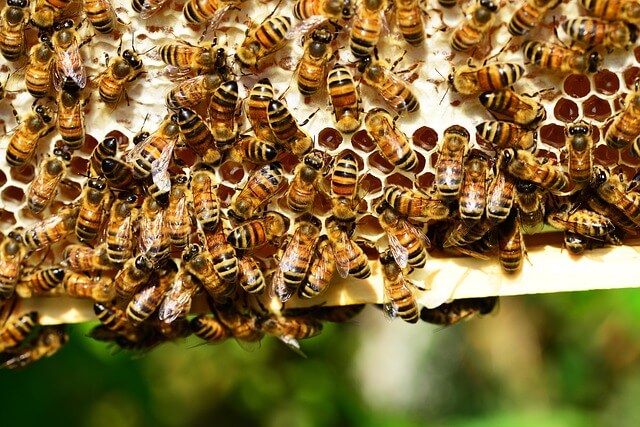Why do honey bees swarm?
All animals want to reproduce and the honey bee is no exception. It, however, has a unique way of doing so, both at an individual level and at a colony (hive) level. As soon as a colony considers itself strong enough to 'plant' a new hive without endangering the survival of the 'mother' hive it will attempt to do so by a method known as swarming.
Before a colony can swarm, it must ensure that the 'mother' colony will be able to continue to thrive. To that end, it will set in motion the raising of a new queen to take over the original colony. This is achieved by the workers producing a number of Queen cells (readily identified as cells which hang vertically rather than extend out from the face of the frame). Once the queen has laid a fertilised egg in each of these cells, the workers feed provide royal jelly *** and draw out the cell to the required length.
As soon as the first of these Queen cells has been capped, the original queen (provided her wings have not been clipped) will leave the hive together with up to half of the workers and take up a temporary residence in a nearby tree, bush, or on a fence etc. From here, scout bees will fly out to source a good site for the new hive, and after a fascinating process of vetting, the whole swarm will set out to the best of the sites found.
If the original queen's wings have been clipped then obviously she cannot fly off with the swarm and so the swarm will wait until one of the new virgin queens has hatched and then fly with her.
Since a hive will raise several new queens (as an insurance), provided the bees remaining after the first swarm are more than enough to ensure the survival of the original colony, further swarm(s) can occur of fewer bees. These are rarely successful if left to their own means to produce a new viable colony.
